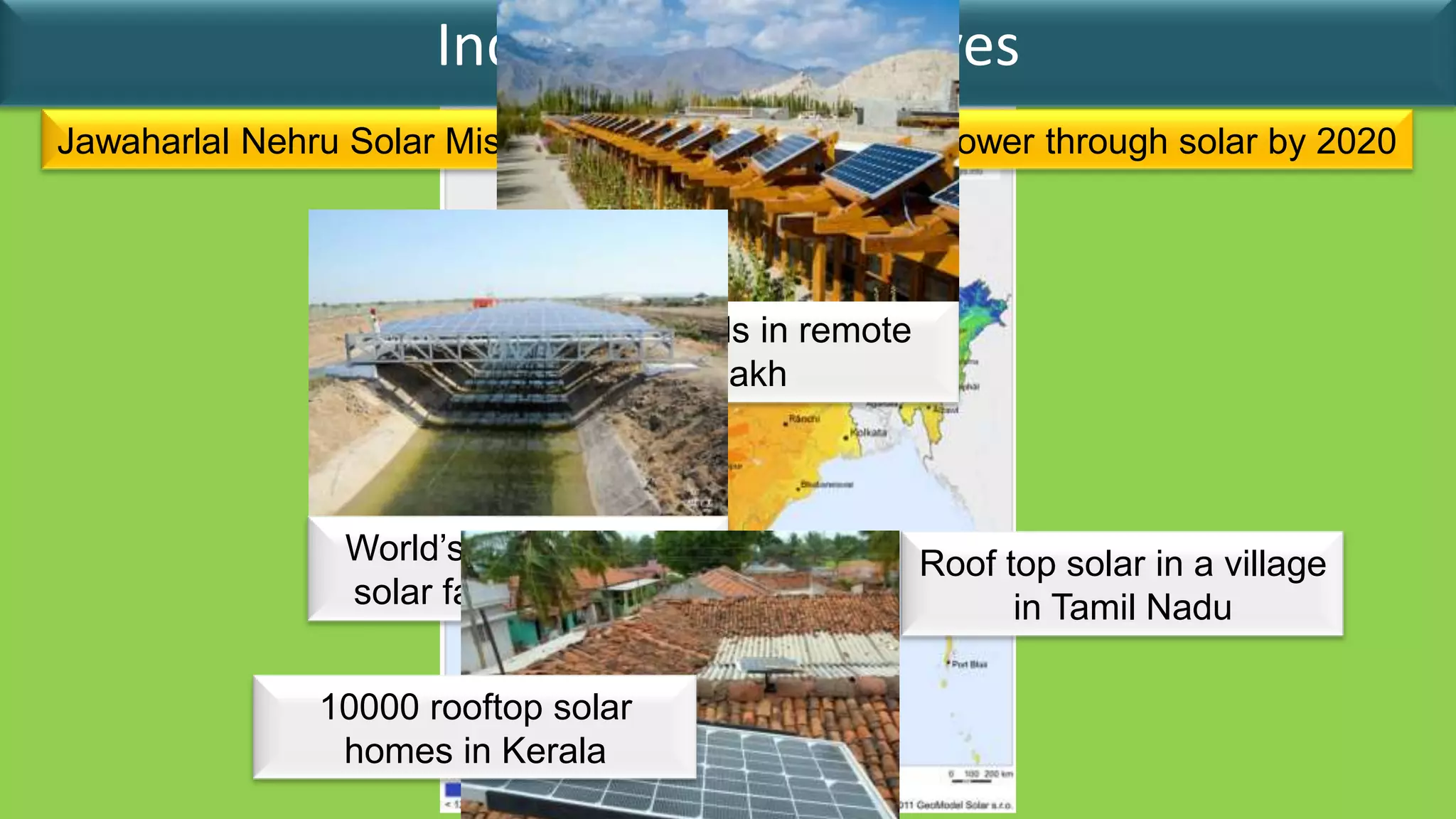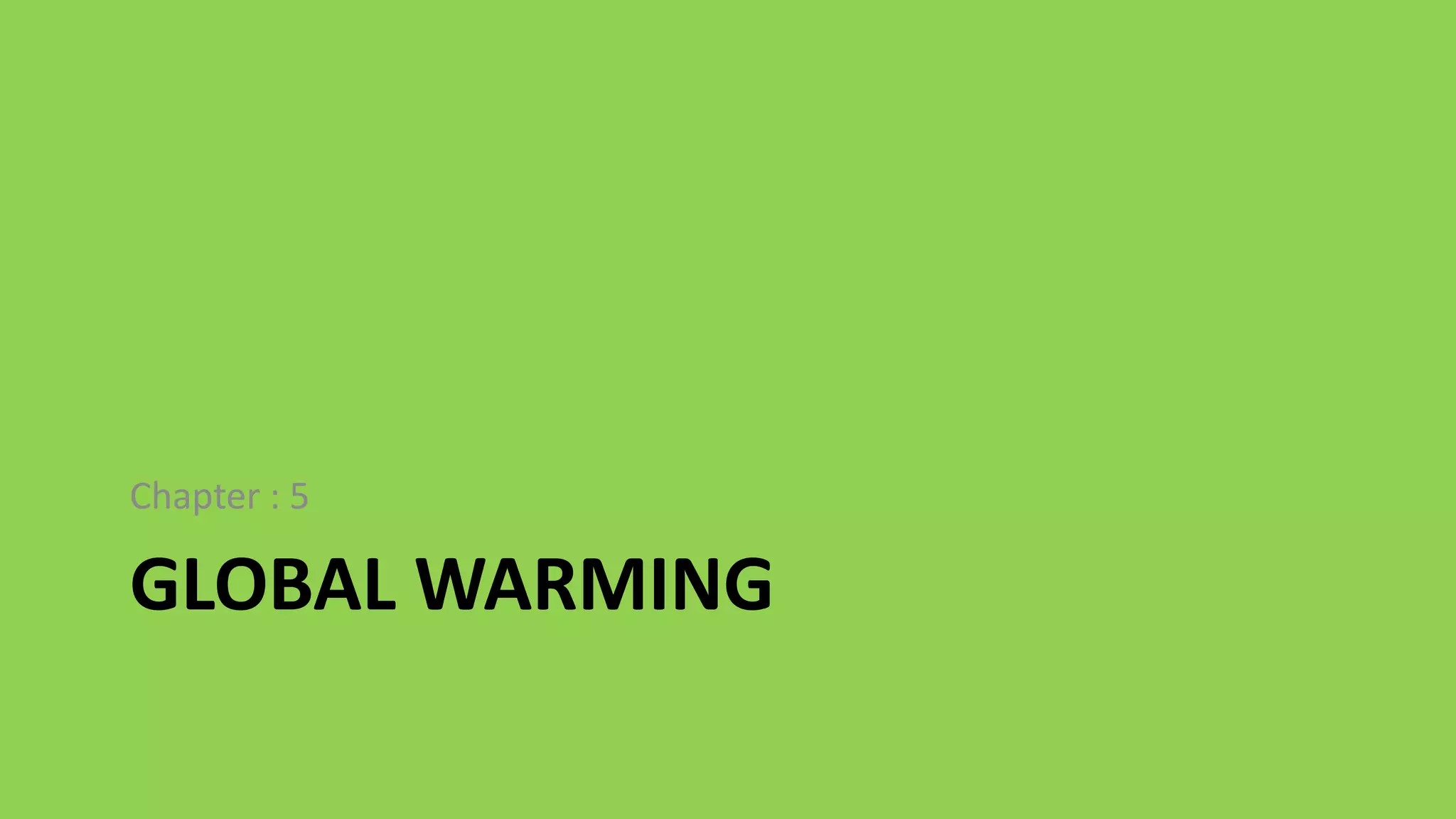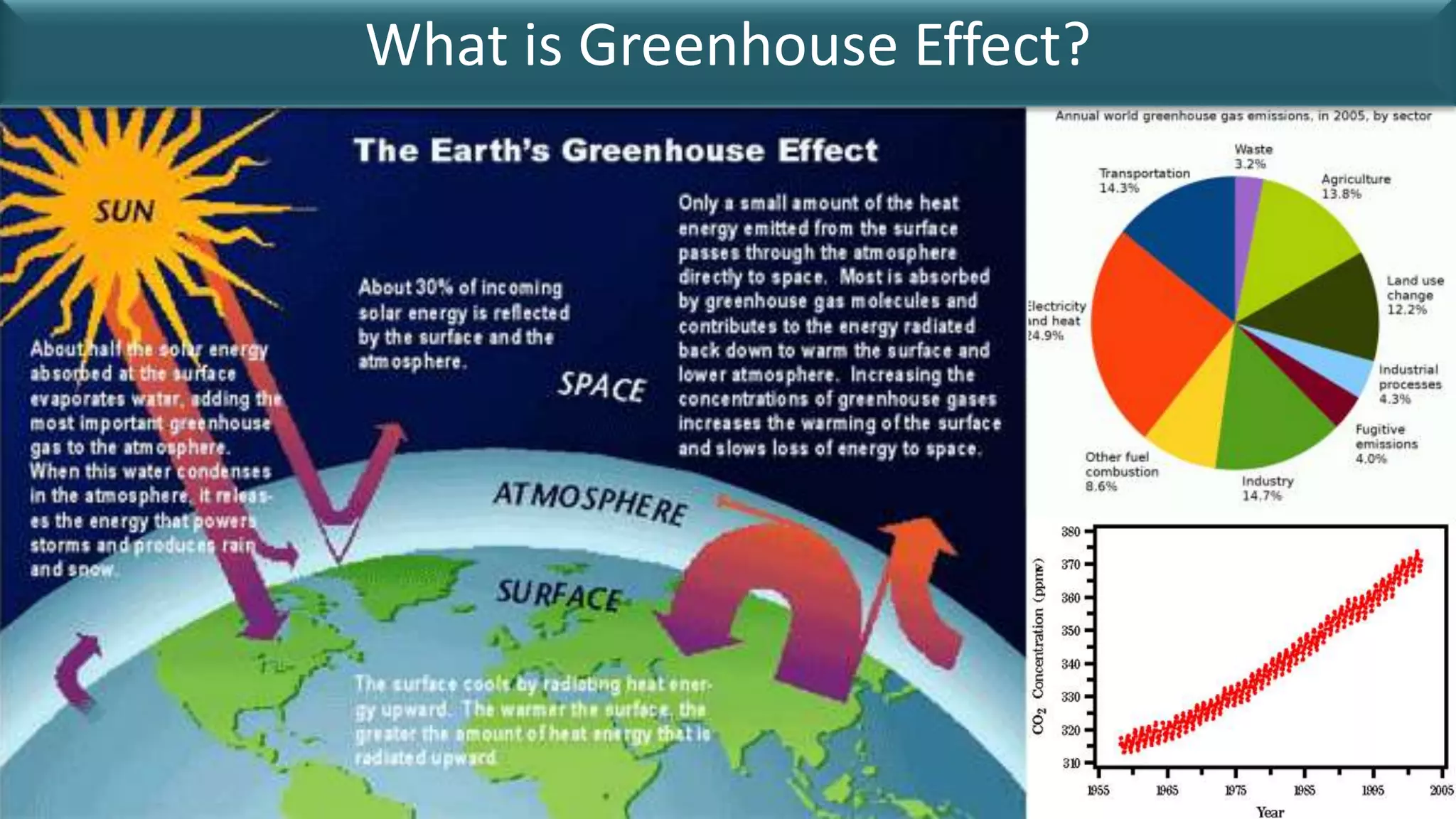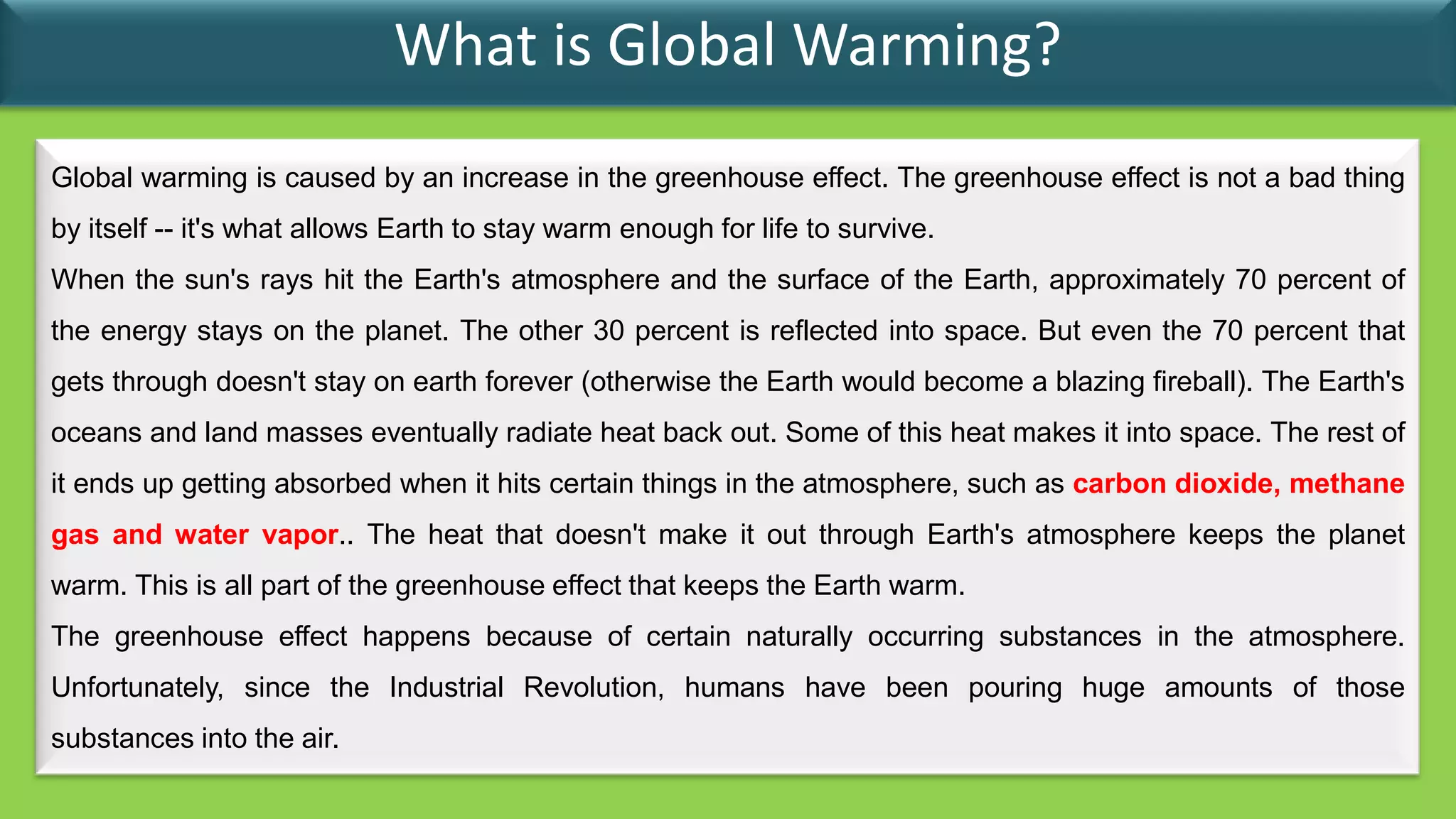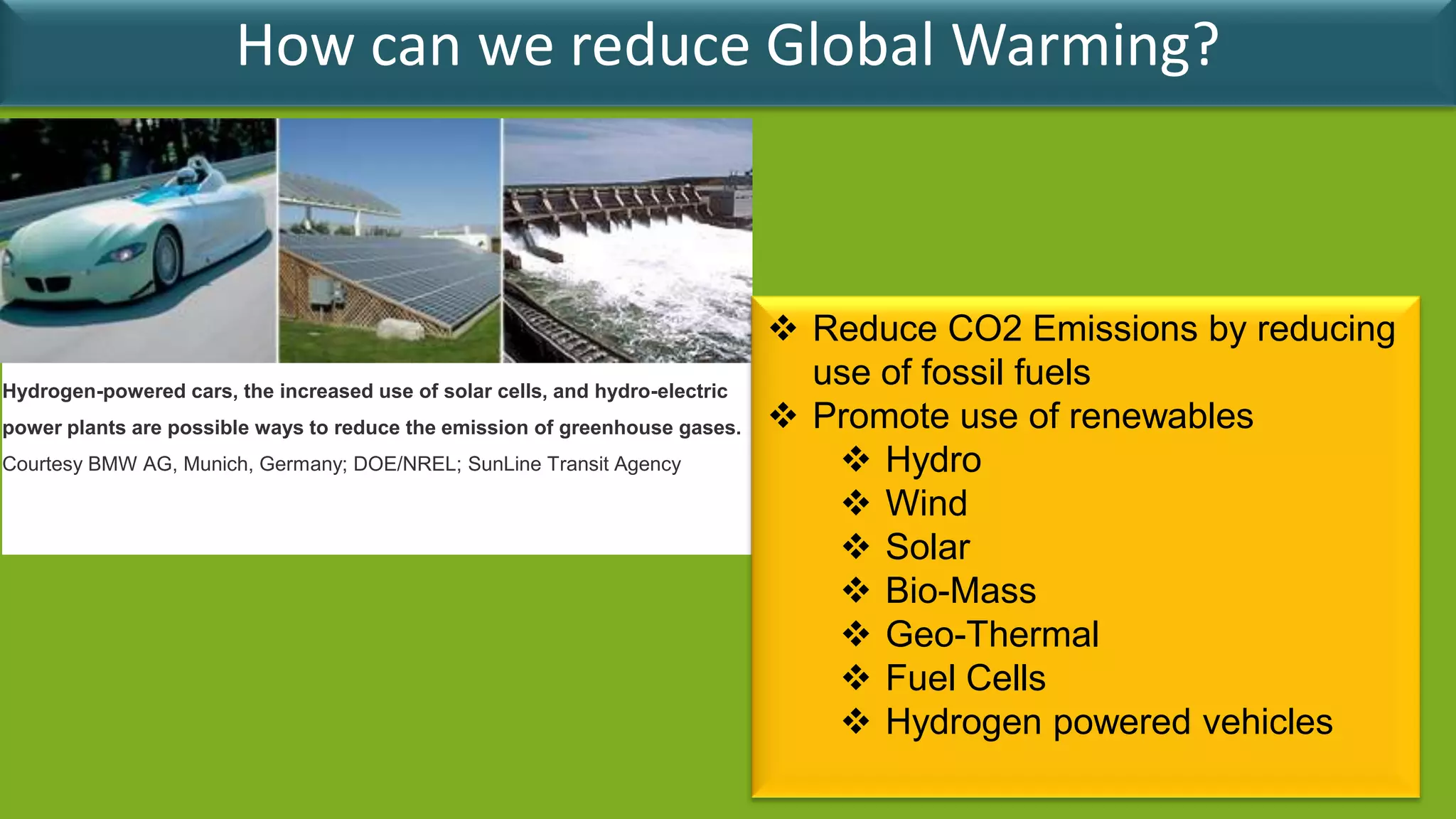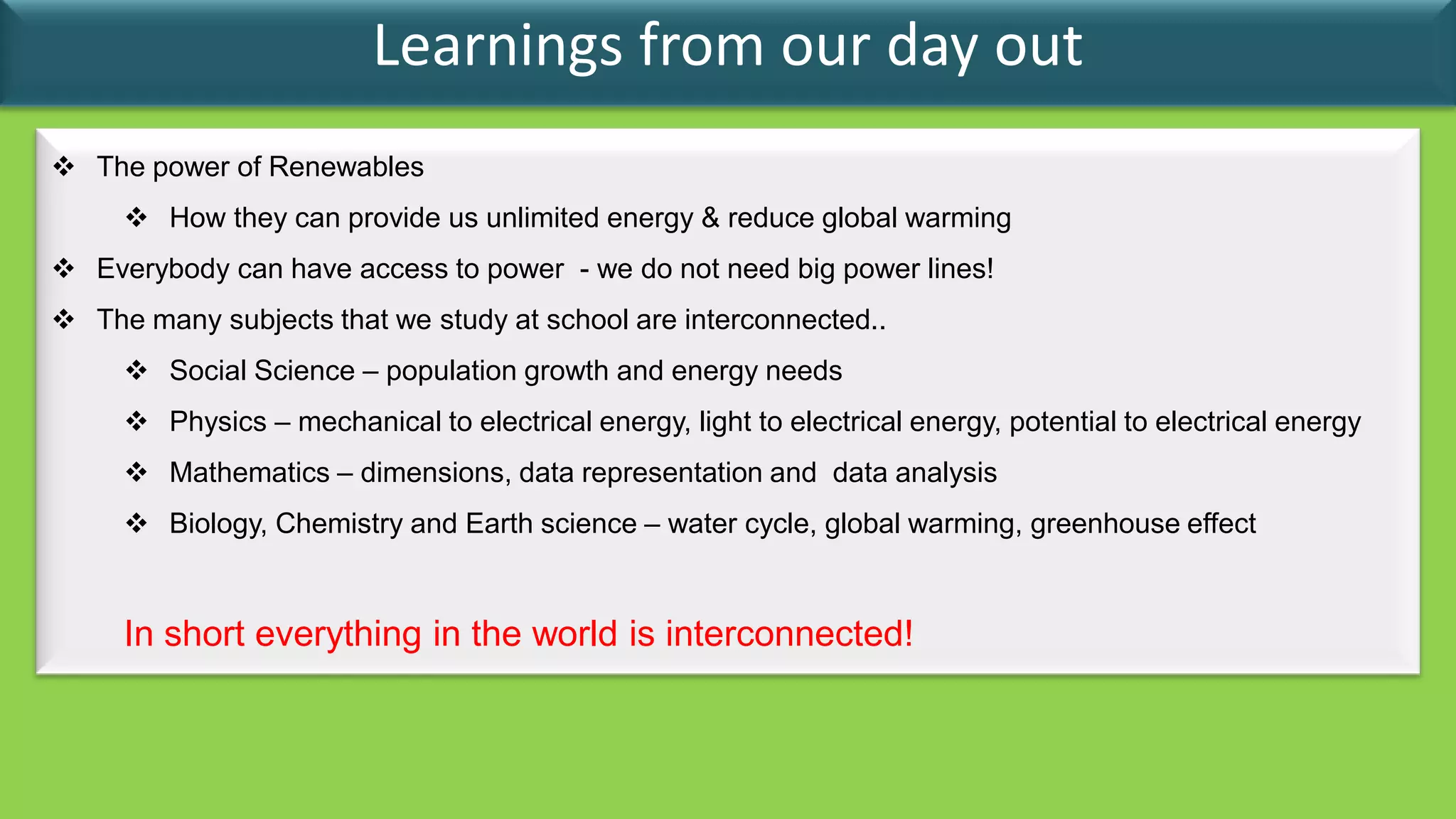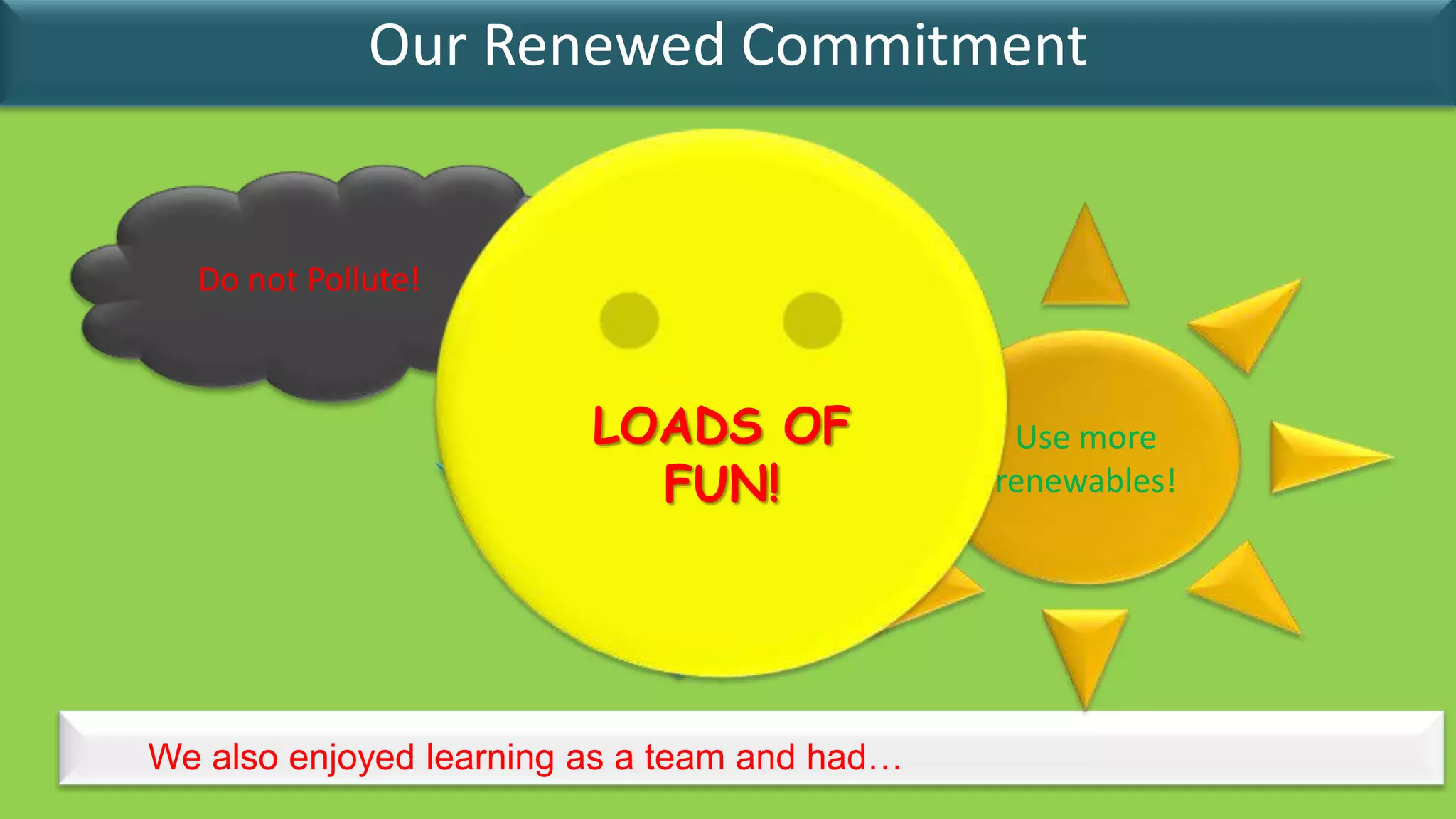The document summarizes a group's visit to Mithradham Renewable Energy Centre to learn about renewable energy sources. It discusses how the Centre uses solar, wind, and biomass systems as models for sustainable development. The group learned about energy security and the need for renewables due to increasing population. Global warming occurs due to increased greenhouse gases, and can be mitigated by reducing fossil fuel use and promoting renewable alternatives like solar, wind, and hydro power. The excursion highlighted how social, physical and environmental topics are interrelated, and motivated the students to reduce pollution and energy consumption.
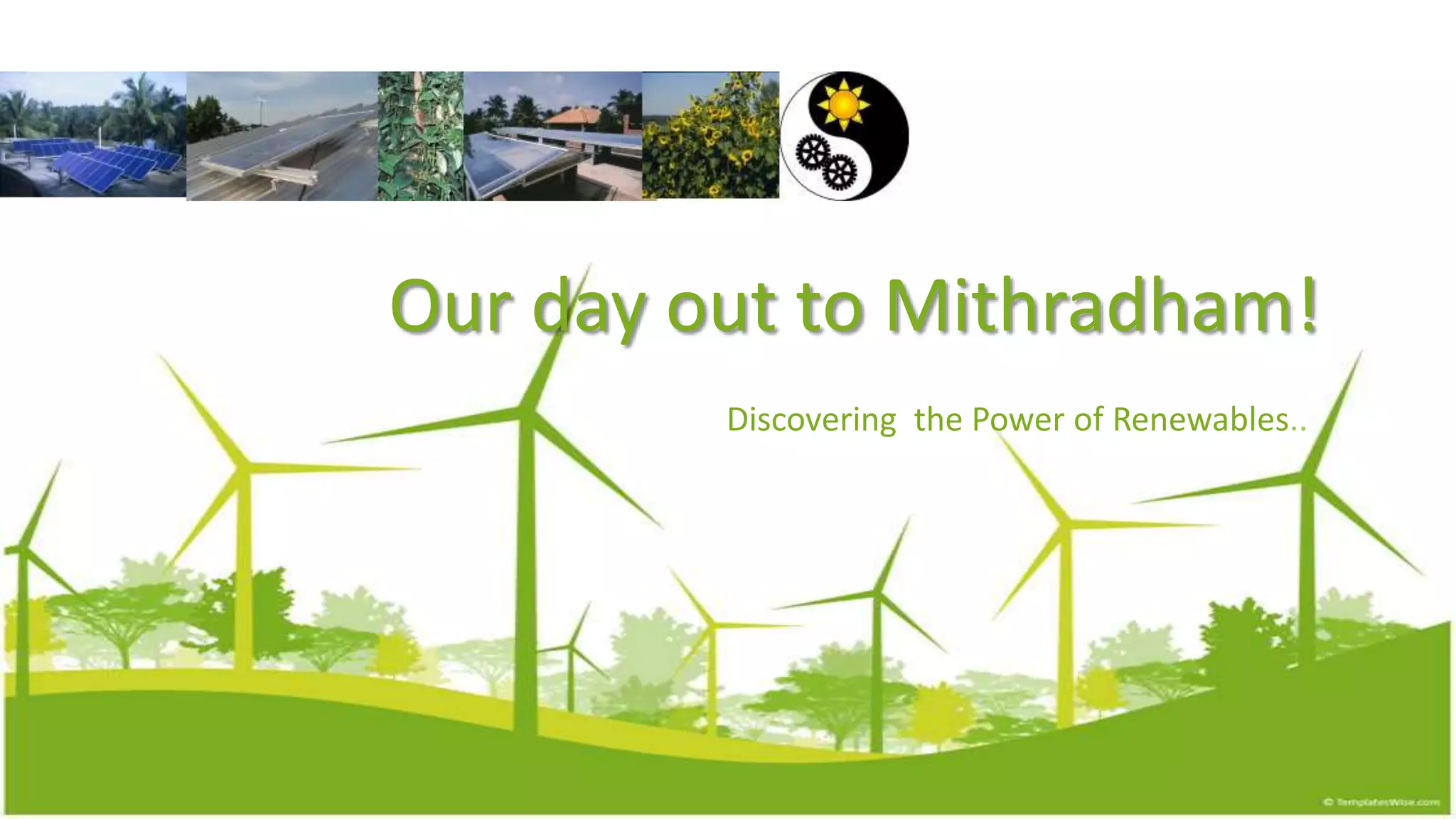
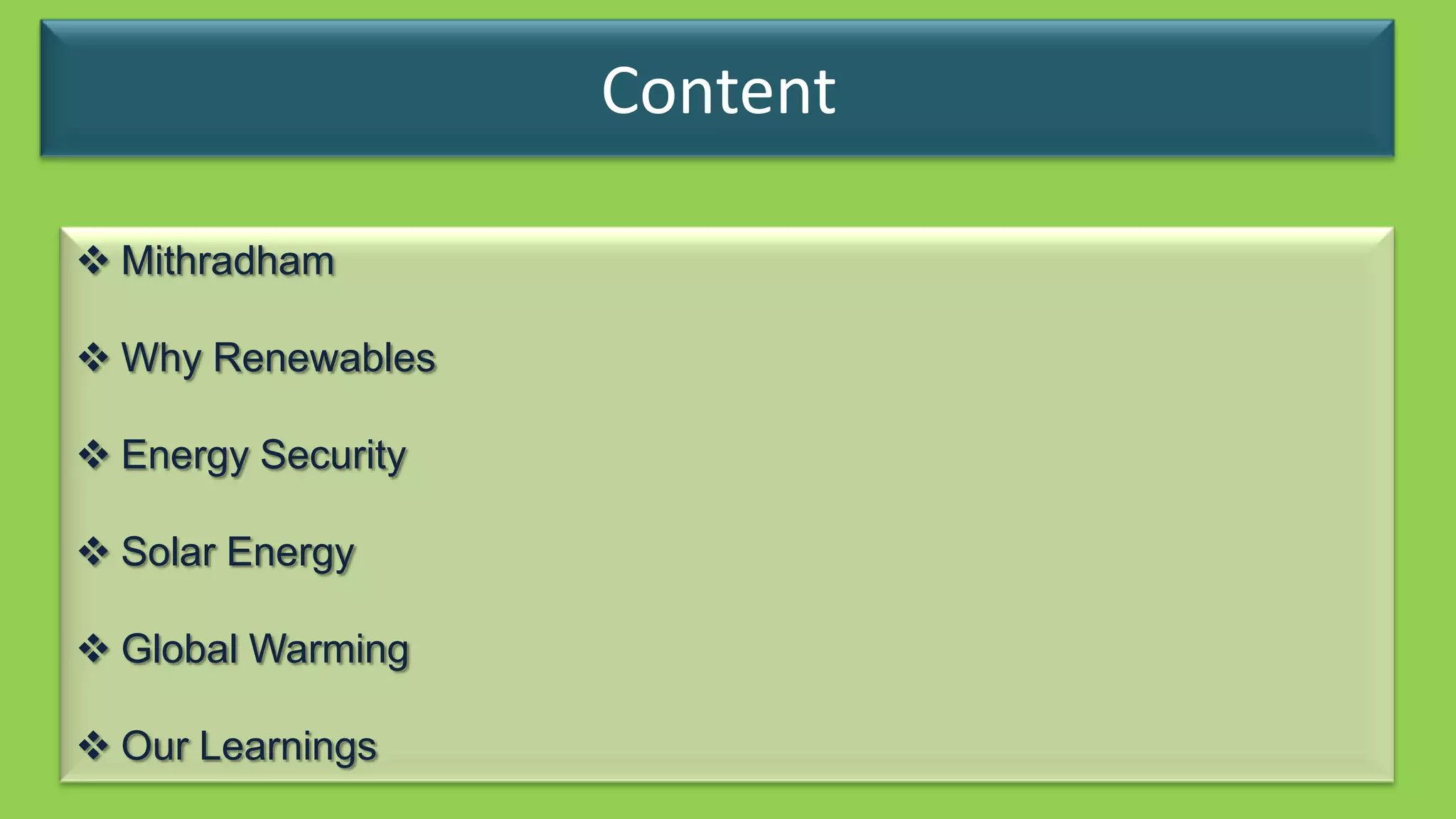
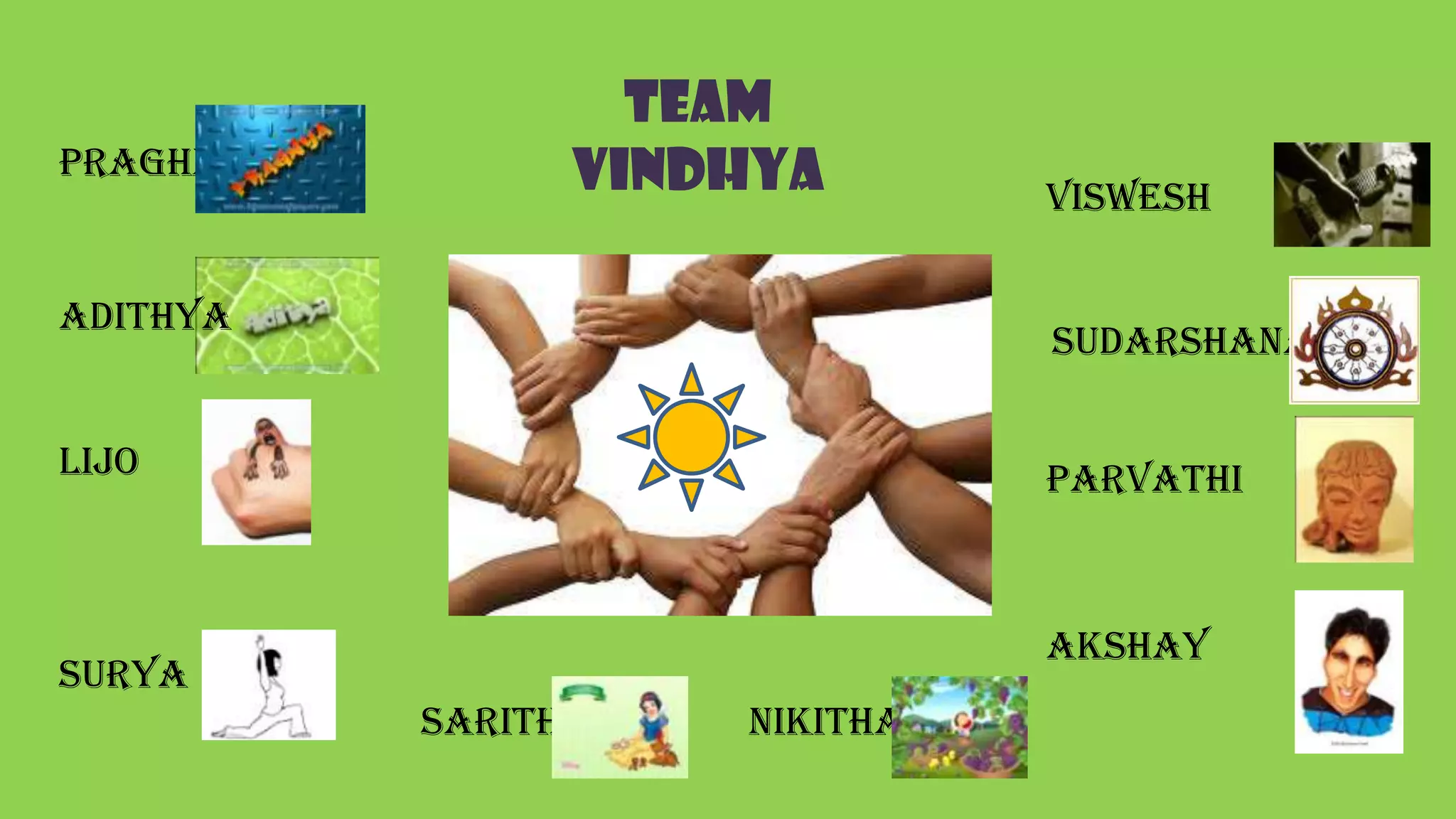


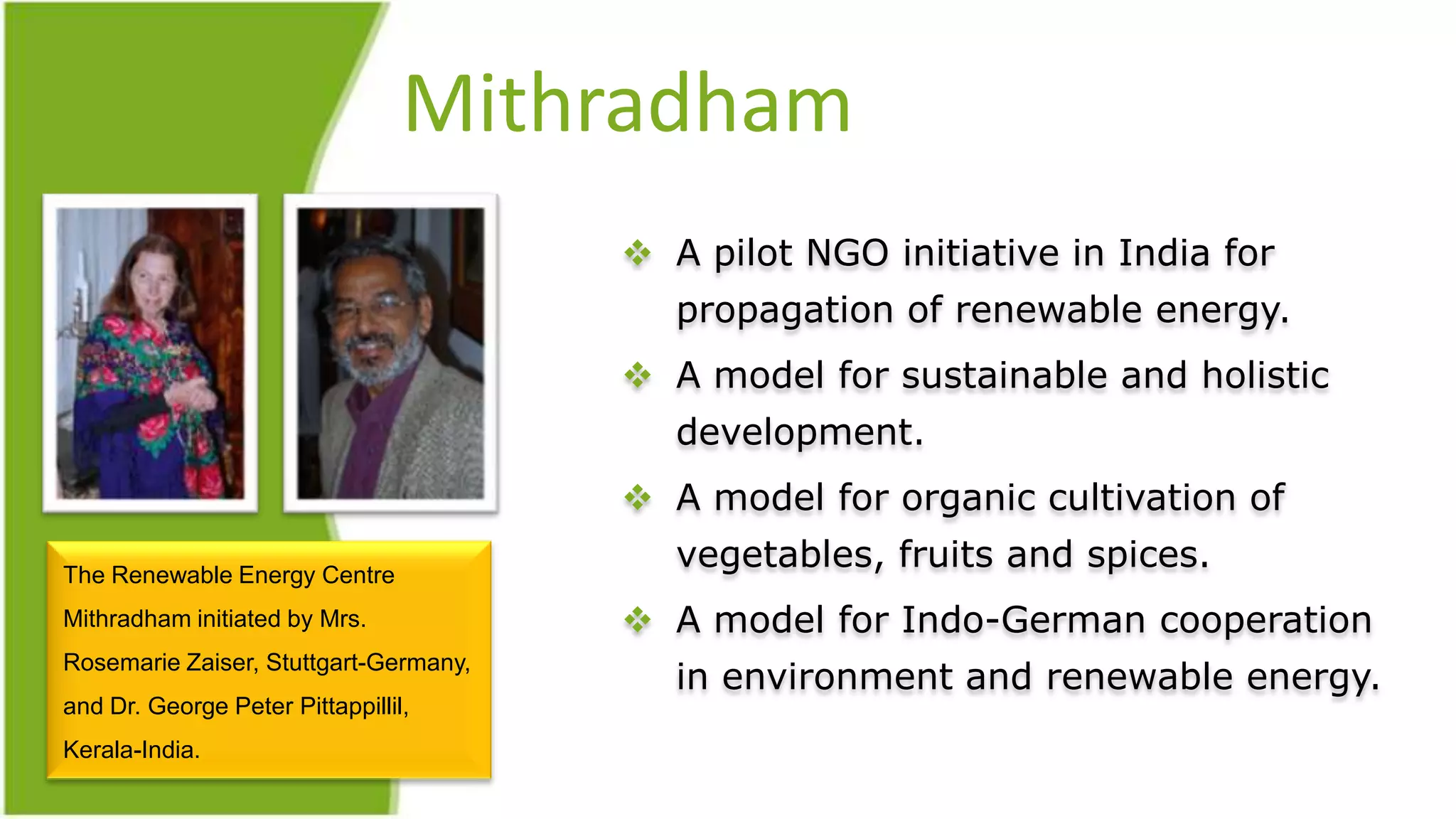
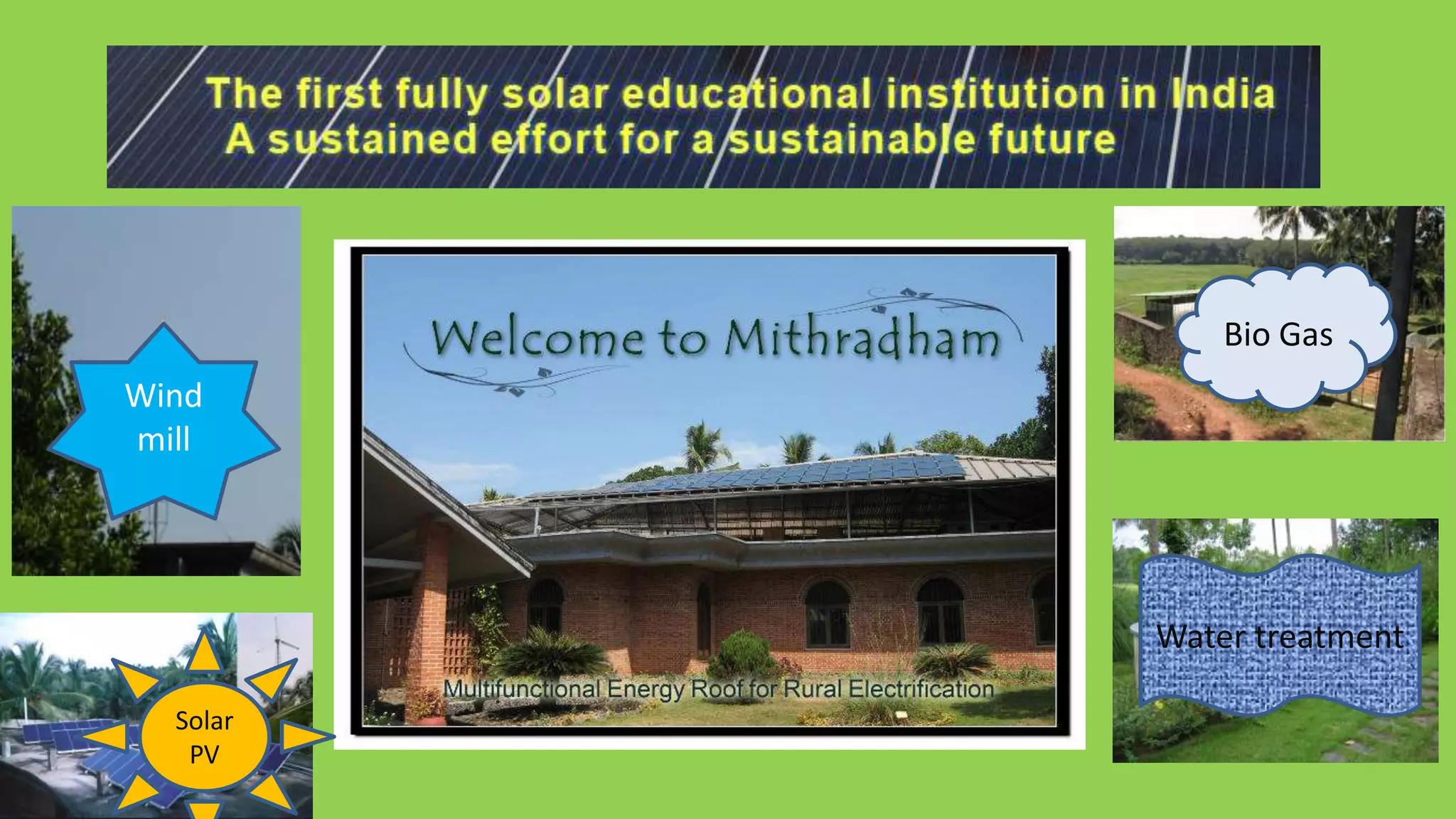
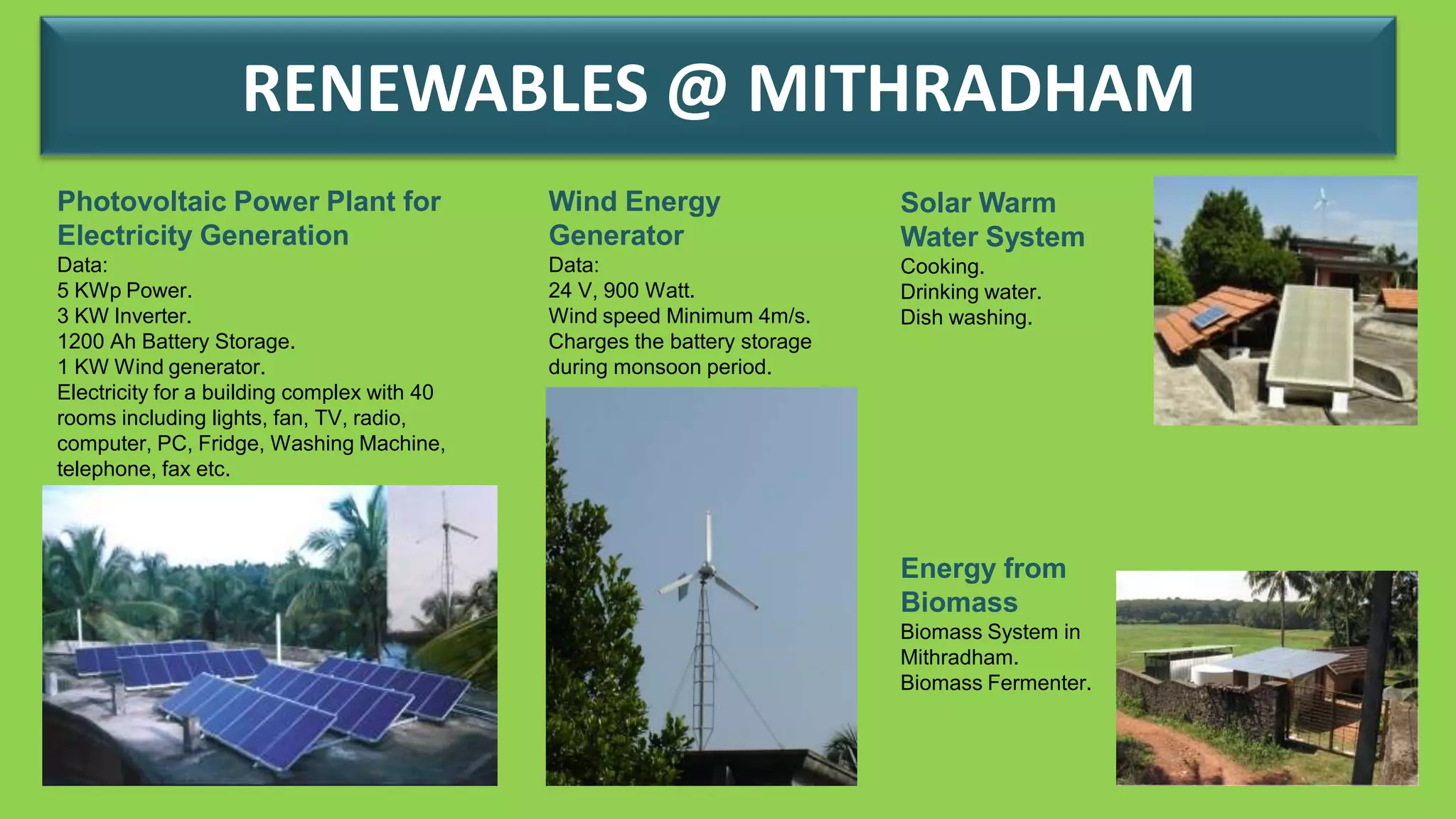
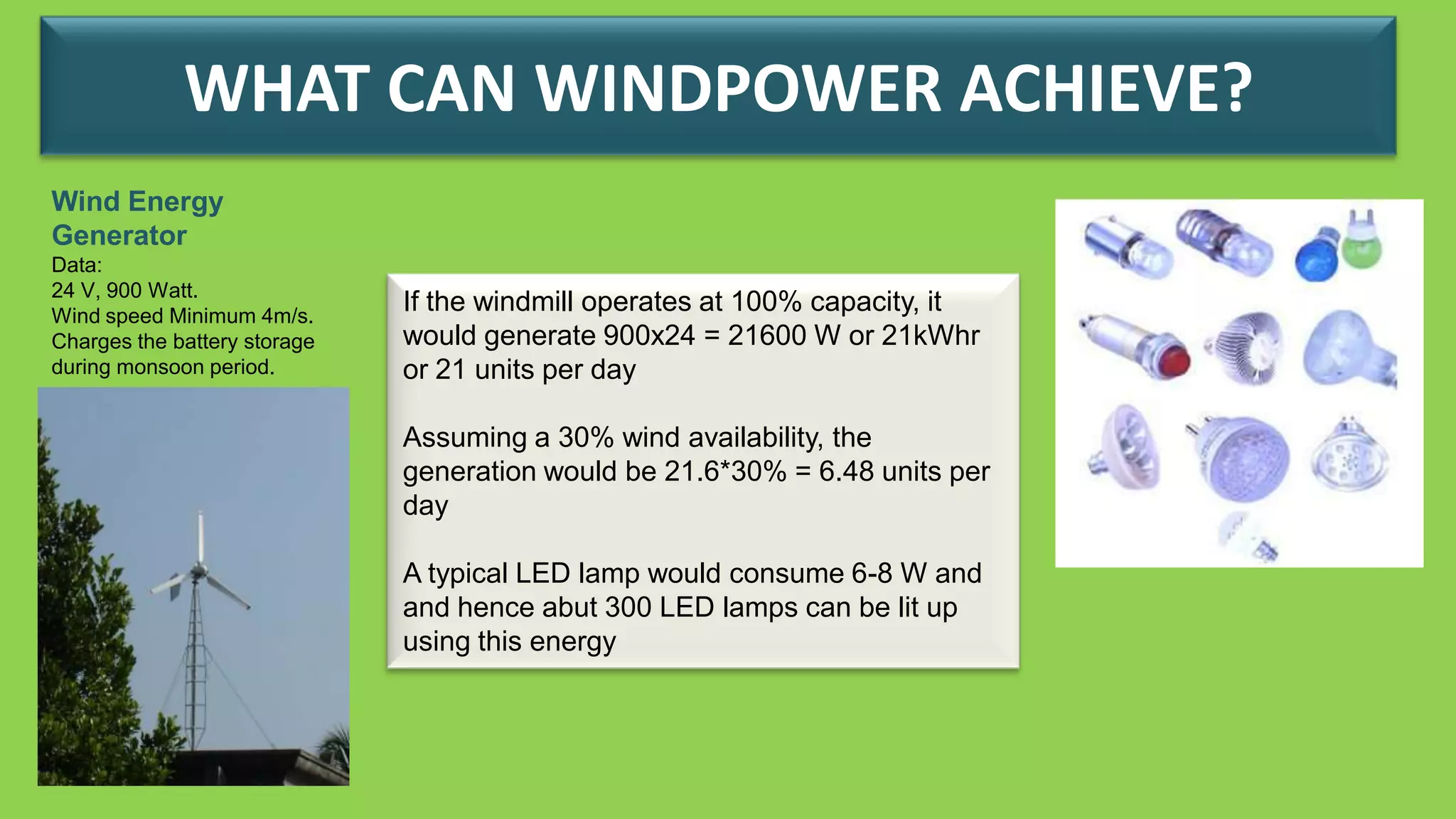
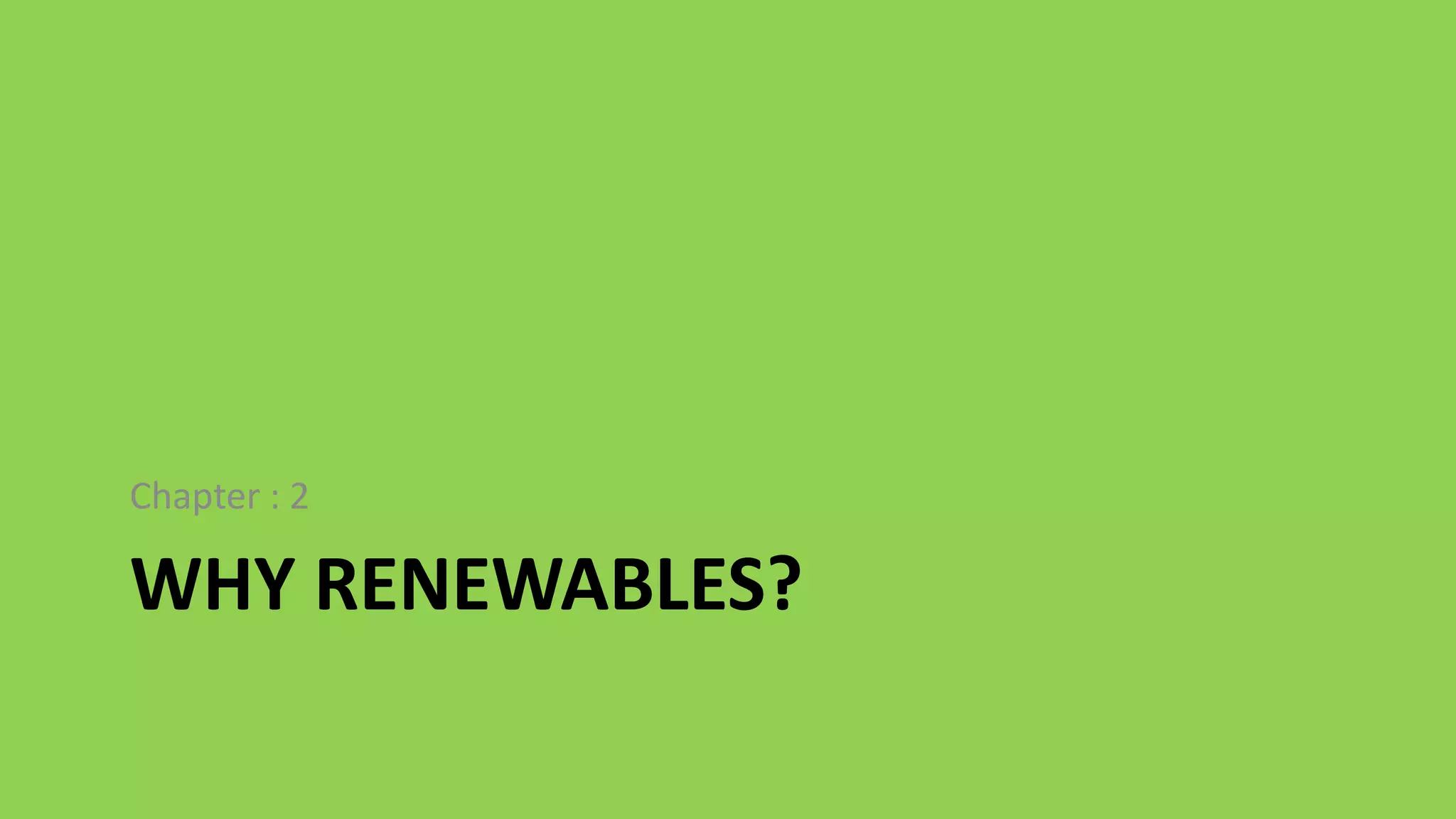
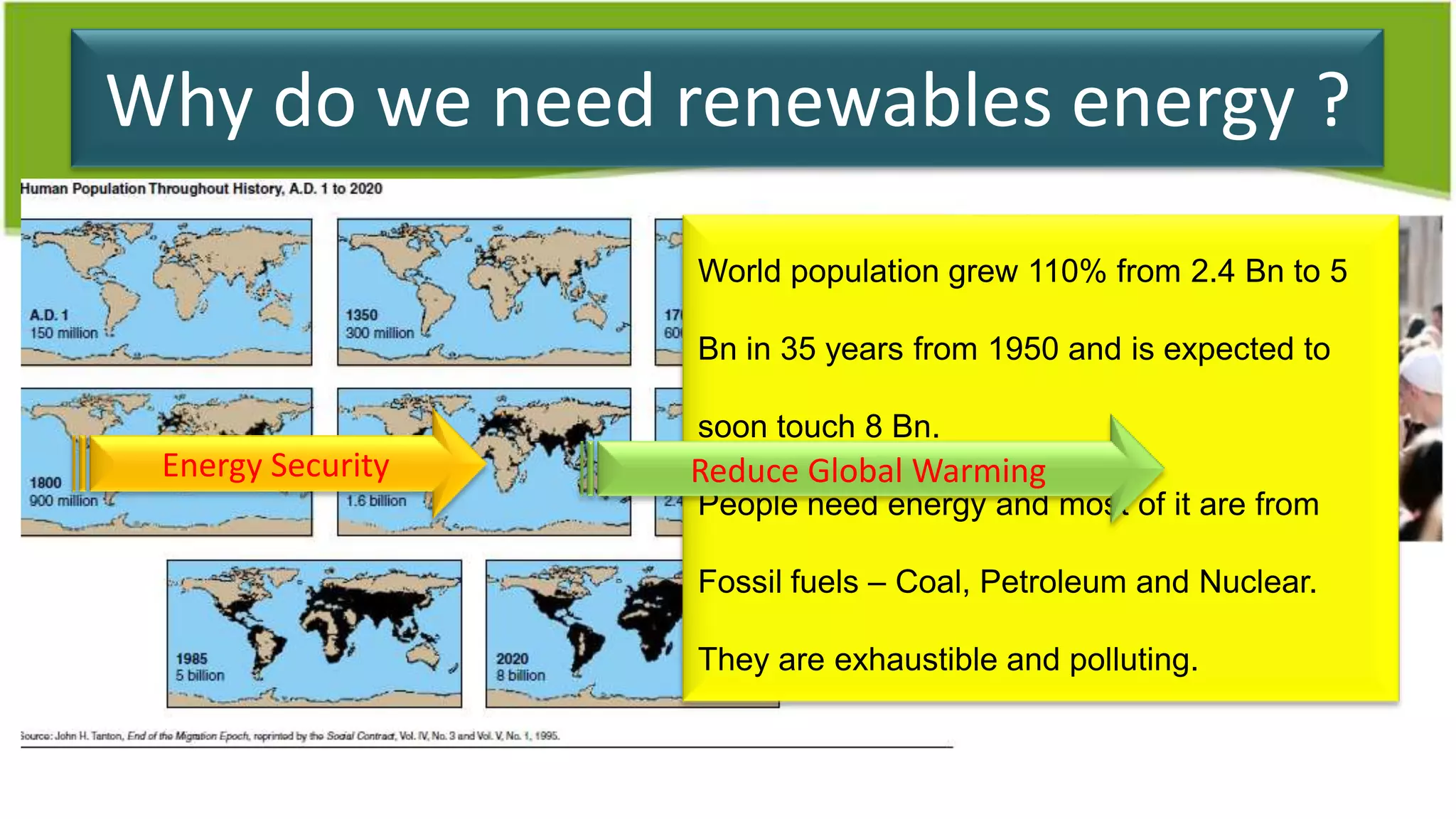

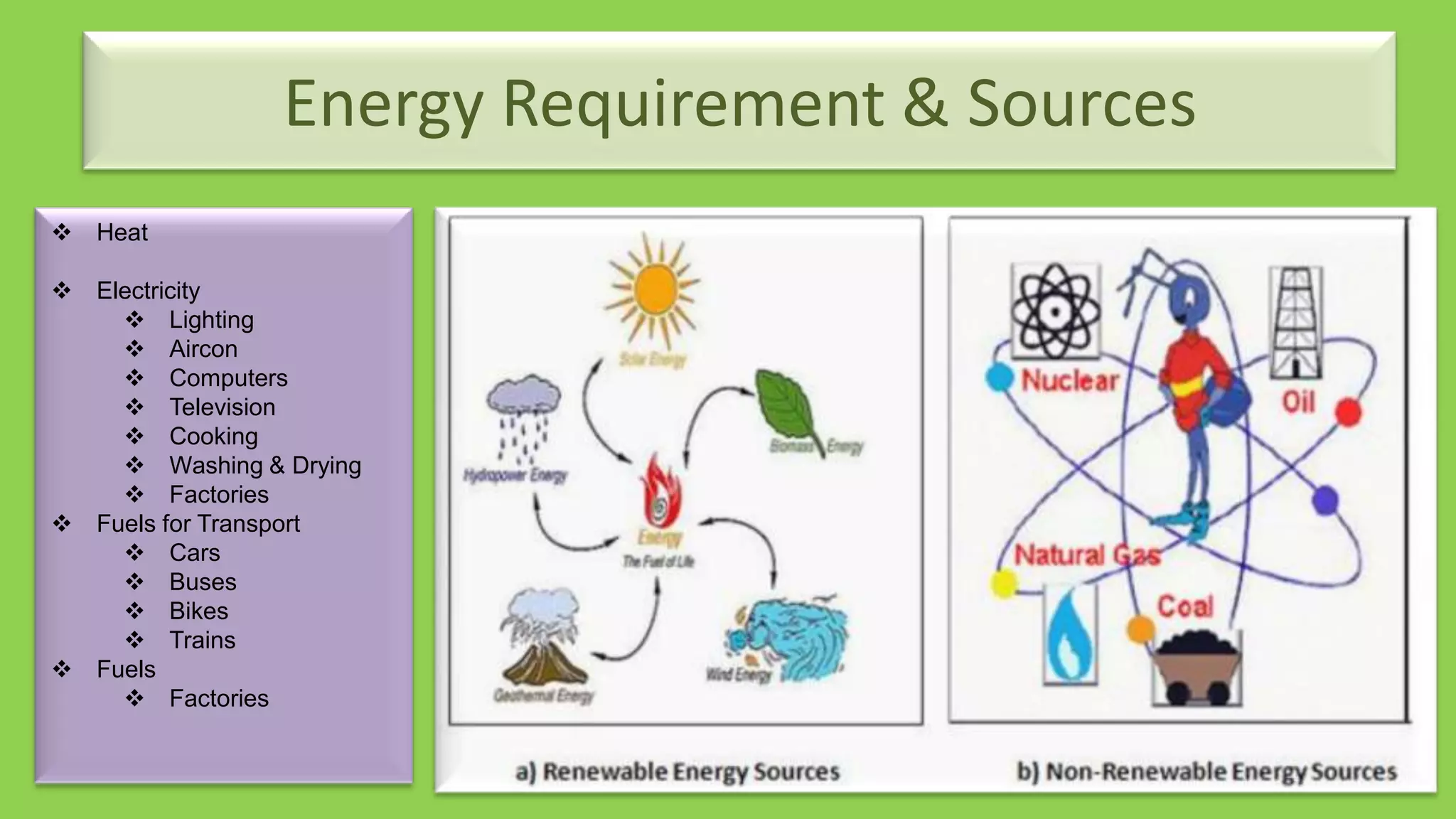

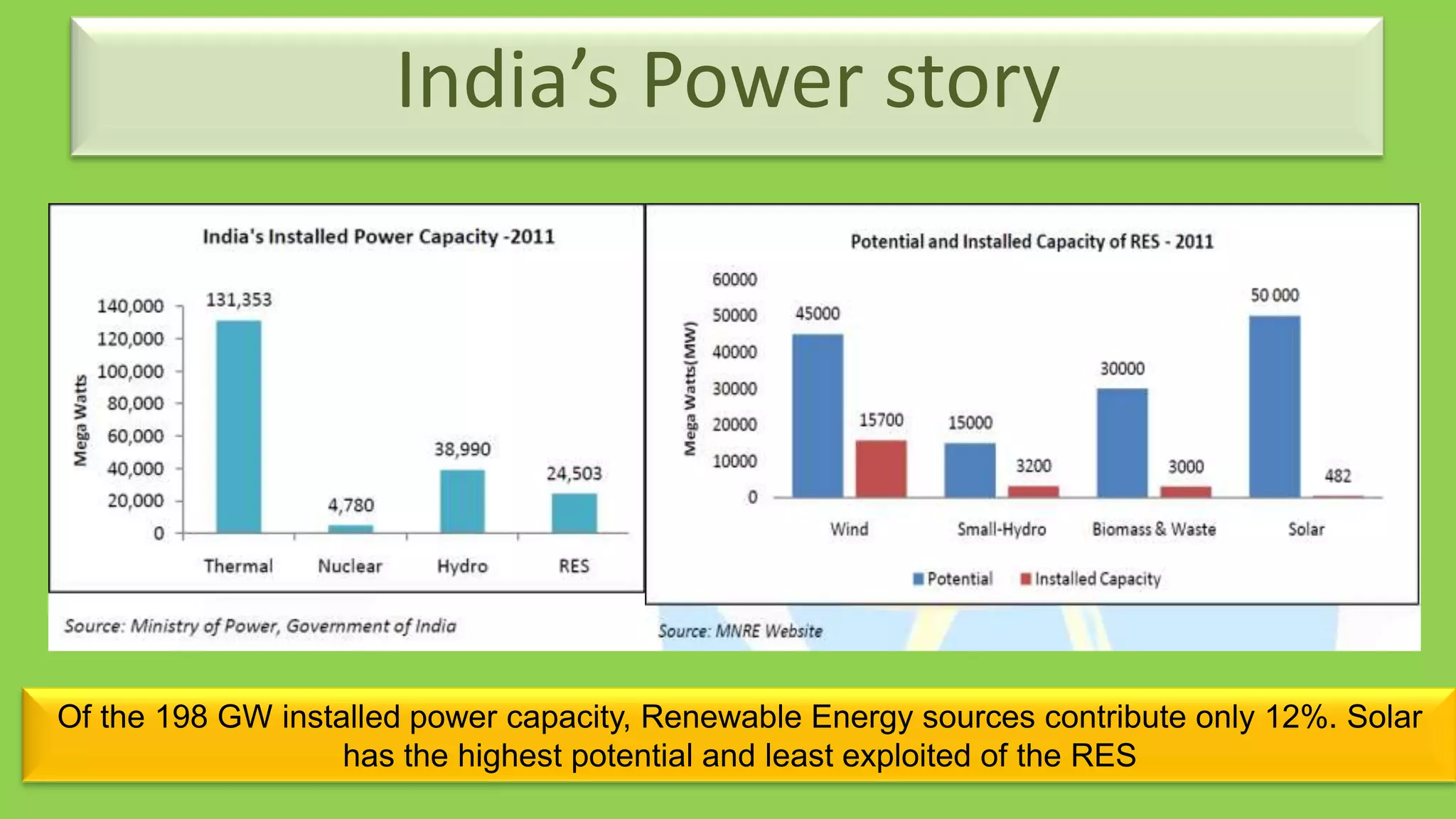



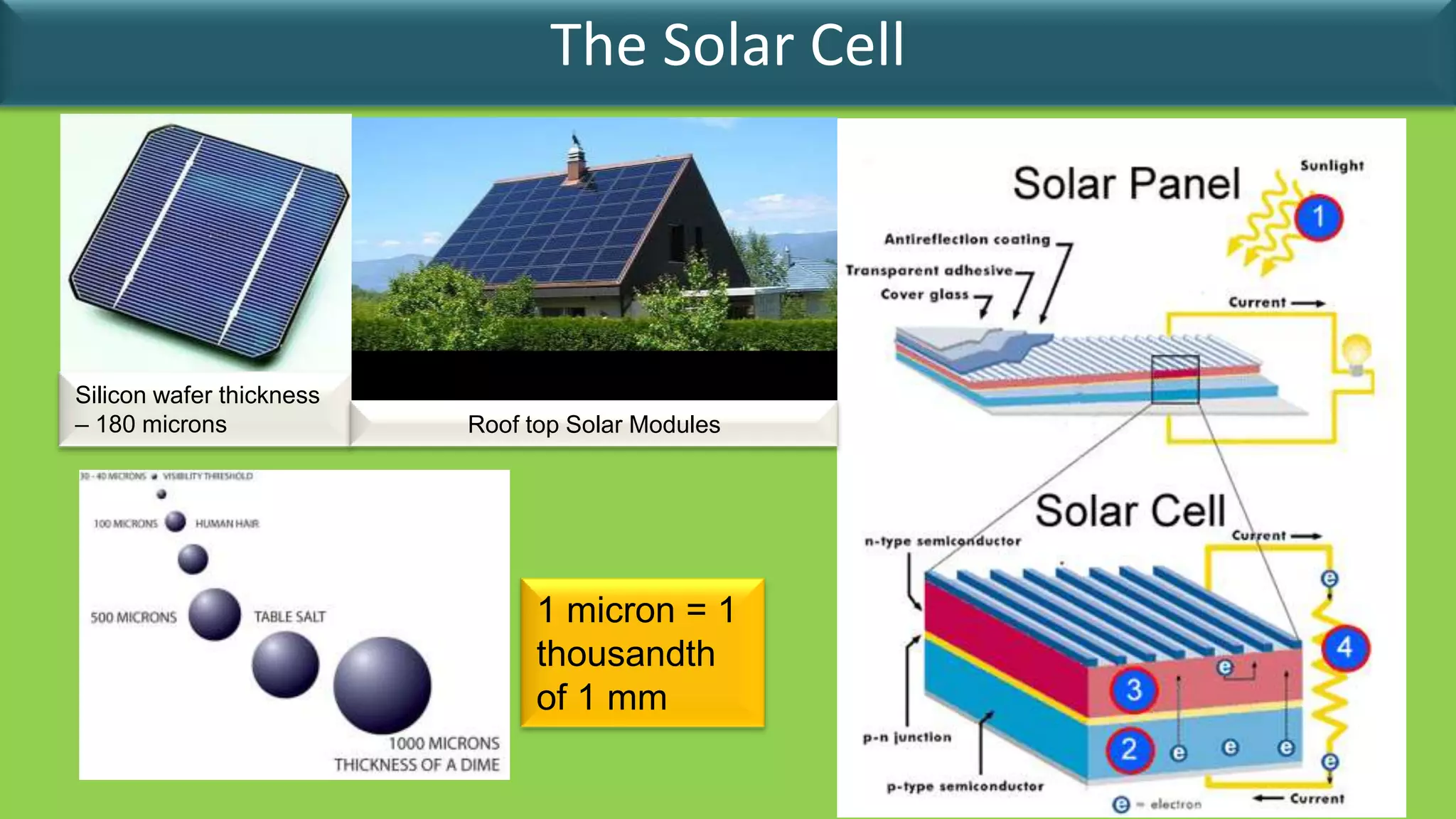
![Solar modules used to harness energy from the sun are made up of
photovoltaic cells. Photovoltaic cells are constructed of semiconducting
materials, usually silicon. The cells use either crystalline silicon or amorphous
silicon.
Pure silicon acts as an insulator, but by doping the silicon with phosphorus, an
element with five valence electrons, an n-type semiconductor is created.[5] .
Because silicon has four valence electrons, phosphorous provides additional
electrons to the silicon crystal lattice so that there are more electrons in an n-
type semiconductor than there are places for them to fit into the
lattice.[6] These extra electrons will carry electric current and generates
electricty.
Semiconductors can also be of p-type. Dope silicon with boron, which has
three valence electrons, to create a p-type semiconductor. P-type
semiconductors have “holes,” which are empty places for electrons in the
lattice, as their majority carrier because boron has one less valence electron
than silicon. When the two types of semiconductors are placed next to one
another they form a p-n junction where holes drift from the p-side to the n-side
and free electrons drift in the other direction. This movement of charge
(negative electrons) produces an electrical field across the junction, or the
location where the two sides meet. Negative ions are left behind when a hole
leaves the p-side and positive ions are left behind when a free electron leaves
the n-side.](https://image.slidesharecdn.com/mithradam-discoveringthepowerofrenewables-130228105400-phpapp01/75/Mithradam-discovering-the-power-of-renewables-20-2048.jpg)
